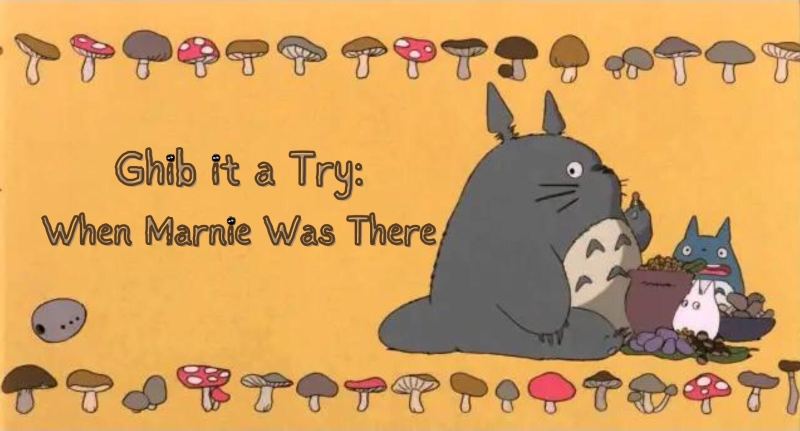In “Ghib it a Try!”, columnist Emma Kexin Wang ’24 reviews lesser-known films from Studio Ghibli.
Editor’s Note: This article is a review and includes subjective thoughts, opinions and critiques.
Mostly known for its fantastical films like “Spirited Away” (2001) or “Howl’s Moving Castle” (2004), the famous Japanese animation studio Studio Ghibli and its director Hayao Miyazaki have won the hearts of audiences everywhere. The studio’s most recent film, “The Boy and the Heron” (2023), marks Miyazaki’s second Oscar win since Spirited Away won for Best Animated Feature in 2003.
With Ghibli’s iconic and generation-defining movies, there are many beautiful films that go under the radar, especially in the West. Hiromasa Yonebayashi’s 2014 film “When Marnie was There” is one such movie. Deeply resonant and quietly magical, this coming-of-age film captures themes of memory, family and how two girls save each other across time.
When Anna, an emotionally isolated twelve-year-old, suffers from an asthma attack, she is sent to the countryside to her foster mother’s relatives. There, she stumbles upon an old, abandoned mansion that she is strangely drawn to. She subsequently “meets” Marnie, a foreign girl with striking blonde hair and blue eyes.
Before Marnie, Anna only finds joy through her drawings, and even then, her subjects are pieces of architecture — the school buildings and the mansion — desolate of people. This all changes when Anna first sees Marnie in a dream and starts drawing impressions of her. What used to be her obsession with solid, determined structures becomes ephemeral, dreamy and wistful. For the rest of the summer, the two girls break the confines of their past, finding solace in each other through midnight boat rides, dancing and picnics by the moor.
But the picnics and dancing aren’t all they share. When Anna confides in Marnie about her insecurities about her relationship with her adoptive mother. Marnie, who Anna assumes to have the perfect family life, admits to the abuse that she suffers from at home.
“I wish I were you,” Marnie tells Anna. Behind the brilliance of the mansion and the dinner parties, Marnie’s words, paired with the film’s first half, reveal the paradox of human connection: that our expectations of other people’s lives are never the same as their lived realities.
Marked under the mystery genre, the film defies audience’s expectations, playing with our constant shifting perception of Marnie — an imaginary friend, a ghost and even, to some viewers, a romantic interest. We are prompted to suspect that Marnie is only a figment of Anna’s imagination, as a mechanism to cope with her extreme loneliness, her self-hatred and fear of other people.
The central question of Marnie’s corporeality becomes the crux of the film’s quietly magical essence, where Yonebayashi skillfully collapses the boundaries between reality, dream and memory. Various hints are dropped of Marnie’s actual (past) existence as a girl, as moments from her childhood appear to be somehow frozen in time initiated by Anna’s arrival.
The mystery heightens at the discovery of Marnie’s journal, where the entries in the past chronologically mirror the interactions that Anna has with Marnie. Anna, eager to discover what will happen next, sees that the last few pages of the diary are torn out and is forced to experience first-hand the repetition of Marnie’s final days at the mansion before she is allowed access to the lost pages.
In the end, Marnie’s true identity is revealed in an unforeseen twist. But the question that lingers after the movie finishes is this: Did Anna save Marnie, this remnant of the past brought to life through her own diary, in the same way that Marnie has saved Anna?
The misty mansion in the the moor, Marnie’s sudden appearances and disappearances, and even the impressionist sketches and paintings featured throughout, the entire film feels and looks like a memory: fleeting, ambiguous, and full of an unnamable nostalgia and loss. But at the same time, it is a story of redemption and love, a story where the past feels more alive than the present.
